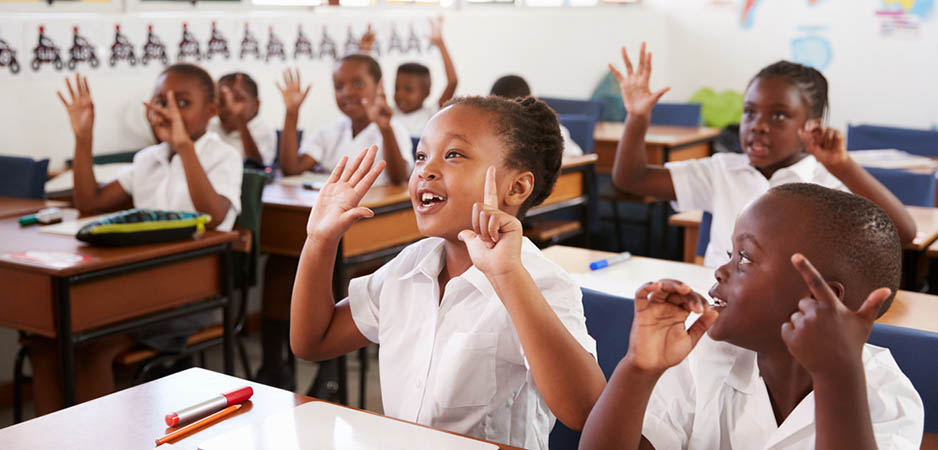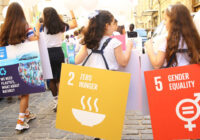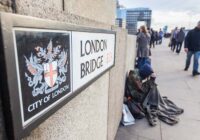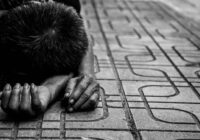In this edition of The Interview, Fair Observer talks to Ahmad Alhendawi, the secretary-general of the World Organization of the Scout Movement and former UN youth envoy.
With 1.8 billion people between the ages of 10 and 24, youth around the world face their fair share of challenges. Whether these challenges are in education or employment, they are highly important and need to be addressed. A proper response to youth challenges needs the involvement of young people themselves in decision-making and political leadership.
During the tenure of Ban Ki-moon as the UN secretary-general, the Office of the Secretary-General’s Envoy on Youth was created at the United Nations. It was mandated with bringing the voices of young people to the United Nations system and working with stakeholders and influencers in government, civil society, academia and media to empower youth and enhance their position outside the UN.
Ahmad Alhendawi, a Jordanian citizen, was named the first-ever UN envoy on youth in 2013, becoming the youngest senior official in the history of the United Nations. He currently serves as the secretary-general of the World Organization of the Scout Movement (WOSM).
In this edition of The Interview, Fair Observer talks to Alhendawi about youth challenges, education and the work of the WOSM.
The transcript has been edited for clarity.
Kourosh Ziabari: Having served as the first UN secretary general’s envoy on youth and working closely with young people from across the world, what do you think is the most important issue currently threatening the future of youths in the 21st century?
Ahmad Alhendawi: I think if you look at the global young population, we have almost the largest number of young people in history. Half of the world population are almost 25, and some of the major challenges facing them are also those challenges that are facing the world today.
Whenever I speak with our youth, I follow those wider transitions that mark the youths. Whether the transition from education to higher education or the transition from higher education to employment, or the transition from the family to independence and whether that’s moving out or marriage or forming families, and the transition that’s also accompanied with health and physical development for young people. So, in other words, there are different tools on understanding youths. For me, youth in part also involves these series of transitions that happen at a given moment in life.
If you take them quickly one by one, whether the transition to education or to higher education, they all clash with the education system that is relevant to the needs of young people and the needs of constantly changing realities in our world. There are challenges that are related to obtaining education that is relevant. Education that makes you equipped with the skills that you would need in the world today — whether critical thinking or soft skills, the ability to have the curiosity and the resilience that is required in the global economy, and the transition to the labor market.
With the youth unemployment rate that has doubled and the regular unemployment rate, the question is about the future of jobs. It’s not only about how to get your first job, but also how you can be competitive for the second and third one. And I expect this trend to continue.
Lastly, I’d like to point out the challenges related to some of the health issues —whether obesity or the challenges related to maintaining healthy lifestyles, all the way to sexually transmitted diseases and others. These are also some of the challenges that touch important aspects of youth development.
But if I take it in a broader sense as well. We live at a time when the major challenges in the world are also affecting us: Climate change cannot be neglected at all — because that will be the defining challenge of our lives and the next generation’s — the question of sustainability in the broader sense, and the challenges that we see from global peace and security. You see that we have the largest number of migrants and refugees since the World War II. That gives a clear indication of the challenge. And many of those migrants who end up in the sea are young people looking for a better life.
Ziabari: You listed a number of challenges facing youths today. Do you think young people worldwide can be part of solutions for all of these challenges? You mentioned health, education, lifestyle, among other issues. But do you think there are concrete solutions to these challenges as well?
Alhendawi: I totally think there can be no solutions without young people. How we can have solutions that could tackle issues related to relevant education without getting to understand how technology affects our lives today?
A lot of the frustration that comes from the mismatch of education is because young people are getting sources of knowledge from so many different places if their school or university are no longer able to fulfill all their needs. Therefore, better engagement for young people and enabling them to be part of tackling these challenges is the solution — whether that’s climate change or issues related to peace-building. You can actually say there’s no peace without young people. You need to work with them and believe their abilities.
So, in my own work in the scout movement, the central belief is that while working with young people, you are able to deal with many of these challenges. And you’d be better equipped if you equip young people with skills they need.
Ziabari: You are currently the secretary-general of the World Organizations of the Scout Movement. Looking back at your career in the United Nations, how do you evaluate and assess yourself? What were the major achievements, and what were the failures or areas you think you could perform better?
Alhendawi: In the United Nations, I think we had some proud moments of elevating the global youth agenda on the international stage. A few years ago at the United Nations, at the world level, the youth agenda and youth representation were not recognized. Now, we have strong recognition that was even announced with the focus on young people through the Sustainable Development Goals [SDG] or the Security Council resolution on youth peace and security, or a number of conventions including some major events like the ECOSOC Youth Forum. You may be familiar with that: They call it the social council youth forum, and it really put the youth agenda on the center stage and youth participation to an old organization like the United Nations.
So, these are some of the things I’m very proud of and that we managed to advocate with many national governments or achieve stronger recognition on youth issues. In Nigeria, we recently teamed up with young people and managed to lower the age for standing for office. It was 40 years old and we managed to lower that, which is a victory for young people in Nigeria. So there are really proud moments. But I’ll say to summarize that elevating and making youth visible at the international stage and their agenda visible is an important achievement for everyone who has contributed to this movement.
You asked me about challenges as well. The global youth sector generally doesn’t have enough resources. To offer the sector additional and more settled seats around the table in international decision-making and national decision-making is a challenge. We have made good progress by getting the resolutions and frameworks. Now we need application, and I hope the international community will continue maintaining this positive momentum to engage young people.
This may not be simple. The world is full of young people who cannot be ignored when we make decisions. Part of my desire to move from the United Nations to a more hands-on role like the scout movement was this desire to help drive these frameworks, policies, resolutions and the SDGs toward implementation. Working with over 50 million people to translate the goals into action and to go into the field is quite rewarding. In that sense the challenge is to really keep the momentum up and open more avenues for young people in decision-making.
Ziabari: On this representation side, you may agree that the voices of young people are missing in many important sectors. Many governments don’t have youth advisors and, for a number of reasons, are unable or unwilling to engage with their young population and address their concerns. What should be done to convince these governments to devise youth engagement plans and listen to the voices of their young thinkers, intellectuals and entrepreneurs, like the recent achievement you mentioned about Nigeria?
Alhendawi: Yes, I think we can take the example of Nigeria. The activism of young people in Nigeria made all the difference. And number one here is that young people need to speak up and speak out, and they need to organize themselves and they need to lend their voice to the causes — whether that’s on social media or by joining organizations and associations.
Governments need to listen. They need to engage young people, and they need to open spaces. Nothing can be sustainable if governments do not open up more for young people and put more resources and investment in youth.
So believe me, in this journey and working with youth issues, I’ve changed a lot of assumptions and understandings, but the one thing that never changed is my faith and belief in young people’s ability and power when dealing with their voices and engaging this so they can make a big difference. That’s crucial.
Ziabari: What do you think about the role of youths in achieving the Sustainable Development Goals? How can young, for example, contribute to the eradication of poverty and realization of gender equality and social justice? How can the capacities of bright-minded and entrepreneurial youths be used to fulfill the 2030 agenda?
Alhendawi: The SDGs, in my view, is really the to-do-list of our generation. It’s a global to-do list to make the world a better place and to make it more equitable, more sustainable, fairer and fulfilling to all inhabitants of this planet. I think justice is literally a declaration of interdependence between all these areas where we no longer have a development track separate from the sustainability of this planet and its resources that we’re consuming at a rapid speed.
 Young people are the fuel, the engine and the beneficiaries of achieving and realizing the SDGs. I certainly see it first-hand in my job now, working with national scout organizations around the world, and I see the incredible work carried out by young people in their communities — from the work organized by young people in Peru to the very young people in Sri Lanka mobilized after earthquake or flooding. It’s a team focused on great work done by the brilliant scouts who are helping refugees crossing the Mediterranean and integrating them in their communities. Or the examples of scout organizations in Uganda that are helping young people who are in prison to have a smooth entry back into society. These works are really unleashing the potential of young people.
Young people are the fuel, the engine and the beneficiaries of achieving and realizing the SDGs. I certainly see it first-hand in my job now, working with national scout organizations around the world, and I see the incredible work carried out by young people in their communities — from the work organized by young people in Peru to the very young people in Sri Lanka mobilized after earthquake or flooding. It’s a team focused on great work done by the brilliant scouts who are helping refugees crossing the Mediterranean and integrating them in their communities. Or the examples of scout organizations in Uganda that are helping young people who are in prison to have a smooth entry back into society. These works are really unleashing the potential of young people.
Ziabari: Let’s move on to another topic. What’s your take on the worrying trends of radicalization that originate from the conflicts and insecurities in the Middle East and spread to other parts of the world? While these governments don’t have the determination or means to combat radicalization and violent extremism, who do you think is responsible for addressing this concern?
Alhendawi: Radicalization is a real thing. But it doesn’t happen only for one reason. Research on radicalization has shown there are multiple factors playing a role: Whether from the misrepresentation of religious texts or the inequalities caused by poverty to the lack of education or sometimes injustice perceived by people who have ended up more vulnerable to socially radical ideas that are quite destructive.
But the fact is that the vast majority of young people are pro-peace, pro-development, and it’s not fair that young people are portrayed as troublemakers and perpetrators or culprits and victims. The vast majority of young people are peace-lovers who want to live a decent life.
I think a good remedy to fight radicalization is applying these things in a more positive way, offering opportunities, offering access to public spaces, offering decent and democratic societies that are able to offer young people decent opportunities in life. And education, of course, that has the ability to empower young people and enable them to understand and not to be vulnerable to violent extremist abuse and ensuring there is justice that’s observed.
Ziabari: There are many people across the world who need education about other cultures and faiths. That’s where the importance of intercultural and interfaith dialogue becomes known. What do you think about the importance of intercultural and interfaith dialog in preventing stereotypes from being created and how can young people in different countries take part in this process?
Alhendawi: Yes, I think these exchanges like cultural exchanges are of vital importance to allow people to understand each other. It’s obvious that we are all beneficiaries of being able to understand the world by traveling, by meeting each other, and that’s a crucial value in my view that is very important. Again, people are more globalized and localized at the same time. It’s the global communication tools that sometimes bring us together and sometimes confuse us with each other. That’s why it should be a commitment of everyone to build the bridges and reach out to each other.
I know things don’t always work in a rosy picture and there are divisions. There are misunderstandings and stereotypes that are not always correct, but the way you challenge them is by offering opportunities of exchange between young people and students who are eventually able to become global ambassadors for a global citizenship.
Another important thing is understanding and having hope in the power of cultures and how cultures can be celebrated and diversity can be celebrated. Not only at the global level, but even certain communities and societies. Some cultures are even different inside the same country. Sometimes they are oppressed or not celebrated. I think that needs to start at all levels, not the national level or regional level, but certainly at the world level.
Ziabari: How do you think the academic schools in the West — for example, in the US, Britain and France — are doing in youth and student empowerment? By youth empowerment, I’m talking about youth-led media, youth councils, activism and youth involvement in decision-making and problem-solving. How are these nations spearheading efforts aimed at empowering young people, especially minorities who don’t have any representation or voice?
Alhendawi: I should tell you two practical things. I mean, academic institutions need to do two things.
First, they need to teach people how to think more than teaching what to think. They need to start critical thinking and the ability for people to reach out to each other and question and request and have curiosity. Because you can only challenge stereotypes by curious people who would like to learn more and are thirsty for knowledge — people who know how to question and ask questions.
Second, academic institutions would benefit from diversity: diversity of faculty, diversity in team-working and the administrative teams and, of course, diversity in the student body. I think it’s important to ensure that students are coming from all over the world and people have access to these academic institutions. Because the intelligence you get by interacting with people from different backgrounds and different places is as important as what you study in these institutions.
Indeed, it’s worrying that some academic institutions are sometimes more limited to certain segments of society, whereas I believe it should be open and should enable people to establish a better understanding of diversity in academic institutions because that’s an integral part of learning. What we do in non-formal education and scouting and other organizations is offer the opportunity to travel and do things experimentally and to be able to learn and, at the same time, reach young people who do not necessarily look like each other.
Ziabari: If you were asked to make an assessment of how these schools and academic institutions are doing these days, what would your answer be? And if you were asked to make an assessment of how schools, specifically in the developed world are doing, what would you say?
Alhendawi: You’ll see that it’s difficult to make a general assessment because, at the time, education is being redefined. Are we teaching for technical purposes, or are we teaching for enabling young people with some theoretical understanding or for them to graduate and become academic researchers? The purpose of education is really challenged today for what you use it for. Are you using it for, as I said, some specialized areas where you would like to apply the same knowledge for an academic track, or do you want it to enable you with some good skills for life?
I think these debates on what kind of education and what tools used in education will continue to be high on the agenda. The fact that lots of formal educational entities are resorting to non-formal educational tools is also an interesting development, and I predict this will continue and expand in future.
In other words, it’s not easy to be in the formal educational system, at the delivery side of it, because things are changing, constantly and very quickly, and in a speed that I doubt formal educational systems would be ever able to catch up with.
I will give you one example: I did computer information systems in my undergraduate studies. And I remember that by the time I graduated, the programming language we were using was outdated already. So we had to learn something else to be good for the labor market and find jobs. So, it’s really a struggle and some universities are doing better than others in this field. But I think universities need to challenge their instructors and professors to stay connected with the world around them, because it happens sometimes that students go to find knowledge shared with them that is more of a history in the field, rather than a literary practice. I think challenging these instructors to stay connected is important.
Ziabari: Please tell us about your work at the World Organizations of the Scout Movement. With over 40 million young participants, how is the movement helping young people to actualize their physical and mental capacities and supporting them in their intellectual and spiritual development?
Alhendawi: The scout movement is a 110-year-old strong, non-formal education organization, learning by experiencing things and building the capacity of individuals through not only one aspect. I think what’s really remarkable about the scout’s youth program is that when you join the experience, you not only develop your personality and character, but also yourself physically with all the activities. You also develop socially, intellectually, spiritually and with the ability to learn, and to subscribe to values that are trustworthiness, commitment, dedication and loyalty that really make you a better team player in the future.
I think if we draw parallels today, in a research study we just concluded in three countries — in Singapore, the United Kingdom and Kenya — we found at the period of observation that scouts have performed better than non-scouts almost in all categories of teamwork and the skills that are required not only for the labor market in the future, but also for youths to be able to be an active member of society.
If you study new developments as a science today, you’ll find that it includes all these aspects in it — from cultural, character development, skills development, and also the physical and body development. And I’m glad that we are able to cover a lot of these components of new development in one experience for young people.
I think what’s really remarkable about the scouts is that many young people who are developing through the program say they are having fun and they can do other activities and community service. And that’s precisely the point in scouting: It should be fun and it should be transformative at the same time.
The views expressed in this article are the author’s own and do not necessarily reflect Fair Observer’s editorial policy.
Support Fair Observer
We rely on your support for our independence, diversity and quality.
For more than 10 years, Fair Observer has been free, fair and independent. No billionaire owns us, no advertisers control us. We are a reader-supported nonprofit. Unlike many other publications, we keep our content free for readers regardless of where they live or whether they can afford to pay. We have no paywalls and no ads.
In the post-truth era of fake news, echo chambers and filter bubbles, we publish a plurality of perspectives from around the world. Anyone can publish with us, but everyone goes through a rigorous editorial process. So, you get fact-checked, well-reasoned content instead of noise.
We publish 2,500+ voices from 90+ countries. We also conduct education and training programs
on subjects ranging from digital media and journalism to writing and critical thinking. This
doesn’t come cheap. Servers, editors, trainers and web developers cost
money.
Please consider supporting us on a regular basis as a recurring donor or a
sustaining member.
Will you support FO’s journalism?
We rely on your support for our independence, diversity and quality.






